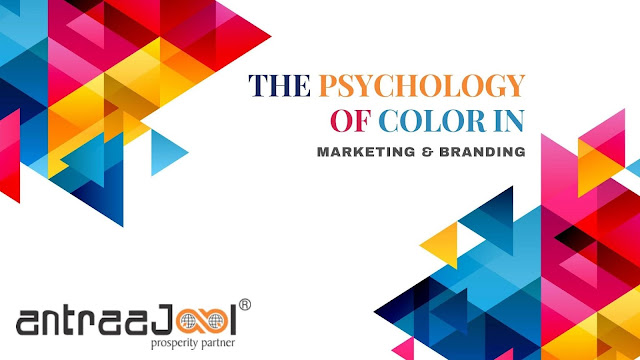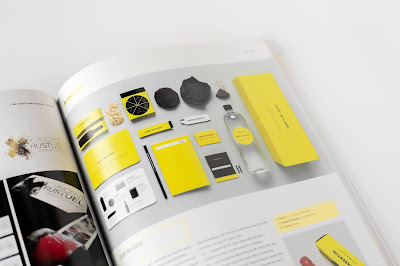What Your Logo Colors Say About Your Brand
What Your Logo
Colors Say About Your Brand
Choosing The best colors for the logo of your brand is a task that makes as much of a
difference as choosing the right name does. Your choice of color here can make
a significant difference to the success of your brand in the years to come.
Even so, it is easy for many business owners to overlook its importance when
creating their brand identity.
In reality,
a company’s logo is actually the first thing customers tend to imagine when
thinking of a brand. In doing so, the colors of the logo can influence people’s
emotions and either encourage them to associate with your brand or not. In
fact, the use of certain colors could actually greatly increase the success of
your branding
and marketing campaigns.
To illustrate
this point, let’s take a look at some popular company logos and the colors they
use:
Hidden
Importance of Famous Logo Colors
Green – Green is used by companies such as
Animal Planet, Starbucks, and Spotify.
Yellow – There are many fans of yellow in
the food industry such as McDonald’s, Burger King, and KFC.
Red – A ton of brands use red in their
logos such as YouTube, Canon, H&M, and Puma.
Pink – Pink is another favorite of the
food industry and is used by brands such as Baskin Robin’s and DUNKIN’ DONUTS.
Purple – Purple is favored by companies such
as Cadbury, Wonka, MONSTER, and twitch.
Blue - Blue is often favored by the tech
industry and can be seen in the logos of various companies like Twitter, Dell,
hp, Skype, and Facebook.
Many
business owners tend to demand or reject specific colors based on irrelevant
reasons, which can prevent them from having the best logo they can have. It is
important to educate oneself on the importance of using various colors based on
their cultural associations and other factors contributing to the brand’s success.
After all, the purpose of the logo is to impress your audience and not just
you.
The color of
your logo will help determine the associations your audiences make with your
company. Therefore, it is a lot more complicated than just choosing new
paint for your kitchen. However, before dwelling into the details of the
intricate science of colors and their psychological relations, it is important
to learn how cognition works.
Understanding
the Psychology of Colors in Logo
Designing
Understanding
the actual sequence of colors in the way the brain tends to perceive them is an especially helpful step in trying to choose the right color for your logo. The first thing to remember is that color is understood by the brain before images
or text. In fact, it comes second in our cognition – right after the shape.
This simply implies that color is a lot more important than even the content
that goes into the design. Taking this into account can make a positive impact
on the branding and marketing campaigns of your business. Now, let’s take a
look at some popular logo colors and what they represent.
What the
Color of the Logo Says About the Business
Color is A very important factor to consider when deciding your brand identity. Since the
colors can severely impact the emotional state of your brand, it makes a big
association with the way your brain can associate with a particular
brand. This can be easily understood by looking at some of the most popular
colors and the emotions they induce in the brain of onlookers:
Red – Power, Energy, Passion, Love,
Aggression, Danger
Yellow – Optimism, Hope, Cheerful, Warmth,
Happiness, Positivity
Blue – Trust, Security, Order,
Cleanliness, Strength, Reliability
Orange – Energy, Balance, Warmth,
Creativity, Cheerfulness, Enthusiasm
Green – Nature, Health, Good Luck,
Fertility, Finances, Eco-Friendly
Purple – Spirituality, Mystery, Royalty,
Sophistication, Femininity, Glamorousness
These common
interpretations of colors can help you to understand the way the color palette
of your logo needs to be organized to evoke the emotions you deem fit for this
job. An ideal situation for this would be to own color in your industry,
however, it requires an enormous amount of expenditure on the marketing of it.
How to
Choose a Color Scheme for Your Logo
Some of the
biggest brands choose their colors after a ton of thought into the decision.
This effect can be easily observed when you take a look at the brand’s products
in its color without the logo is present at all. You will still be able to
recognize the brand just from the color on the product itself. This is what the
influence of color really is. In fact, brands can even trigger the same
reactions as religions can upon being viewed. This was recently verified by Dr.
Gemma Calvert.
The
Psychology of Color in Branding and Marketing
Color can
make a big emotional impact on how it can make consumers feel upon looking at
the logo and other branding elements that are in the same color. On a more practical
level, color can also help you stand out in your industry.
When you see
a glass with a black fizzy drink in front of a red background, you would
obviously know that it is Coca Cola and not Pepsi. This is what can help you
stand out in your industry as well. Since branding and color of a logo are so
closely intertwined, it can help you to convey a large message instantaneously
without the use of words. Color is the key weapon of some of the most
recognizable brands in the world since they rely on it for their instant
recognition. Since you probably already know the importance of the color of
your brand, you can begin to focus on choosing the ideal color.
How to
Find the Best Color for Your Logo
Before
dwelling into color theory, it is important to first do a crash course in
defining colors. This means:
Hue - The actual color
Saturation
– The amount of
greyness in a color’s shade
Brightness
– The amount of
black or white mixed in the color
Now,
choosing the right color of the brand color requires an understanding of color
theory. This explains how color is actually formed and how different colors
interact with one another. To select the perfect colors, you would
need to have a perfectly clear vision of the way your brand needs to be
perceived by your audience. This also requires you to have consistency over the
ideal perception of your brand over all possible media. Therefore, it is
important to use colors wisely to design your
brand identity. Since most colors work best in groups, it would best
benefit your brand identity is you would be able to have all the same colors
working in a scheme together.
Which are
the Best Color Combinations?
The ideal
combination of colors can have the best impact on the way your logo impacts
various aspects such as attention, being visible at night and in dark settings,
eye-strain, etc. This is an important thing to choose when getting colors that
would be used for your website, signing, marketing, and more. Therefore, it is
important to choose families of colors that could be developed to support all
the media and communication channels that your branding campaign would require
using.
As per the
basics, there are two major ways to group colors – Analogous and Triadic. These
are easy to study with the help of the color wheel which helps to see all
complementary or Triadic colors at a glance. These lie opposite to each other
and help increase the contrast in the color scheme. On the other hand,
analogous colors are the ones that are adjacent to each other and can help you
to increase the variety of color options and shades that you may have at your
disposal.
Ideas on
How to Implement Colors in Branding and Logo Design
While some
popular colors are used to unify an identity, others can be
used to help in the clarification of brand architecture via the different
products or business lines under a brand. In such cases, families of colors
support a ton of communication needs.
Take FedEx
for example. They have a brand architecture that is clearly defined with the
help of different colors in their business lines. For example, their Green
represents Ground Services; Orange represents the energy and speed of their
Express Deliveries, and so on. Ensuring an optimum balance of colors in the branding of your
business. This will also help to ensure that the challenge of unifying
colors across various mediums and electronic media stays constant.
This
consistency can be observed well with the example of MasterCard which uses a
combination of different colors in various mediums; however, it still maintains
the consistent color scheme consumers have come to associate with the brand.
The next
step in color theory is the learn about RGB and CMYK for digital and print
mediums respectively.
The
Difference between RGB and CMYK
In simple
terms, the additive colors are those which have a pure form – they combine to
form white. Subtractive colors are the ones that can cancel out and are in
turn called impure.
While both
look the same while observing on the color wheel, they do start to seem
different when observed with the help of color pickers. This mostly because the
spectrums of RGB and CMYK are different. Therefore, something that looks
vibrant on a computer screen can end up looking bleached on a printed paper.
Apart from these two, you can also use Pantone Color Palettes to show the same
colors in both print and digital mediums. RGB is usually represented with the
use of HEX codes for online mediums such as Web Pages.
These are
the basics that will help you choose the right color for your logo and
branding. Hope it helps you make the right decision.
Related articles:




Comments
Post a Comment